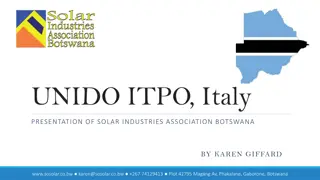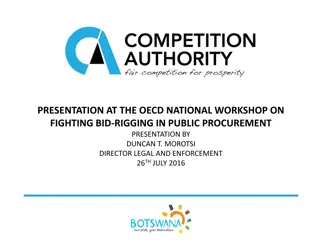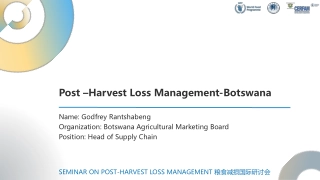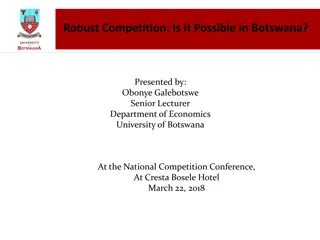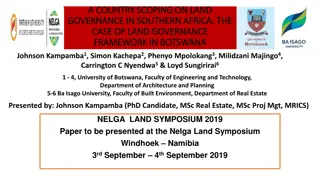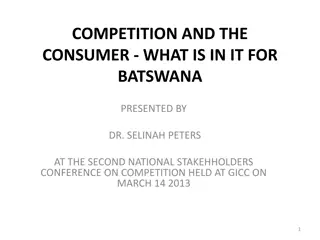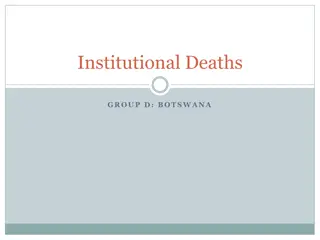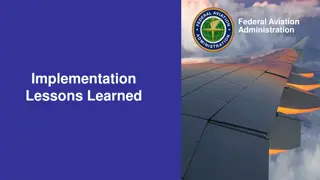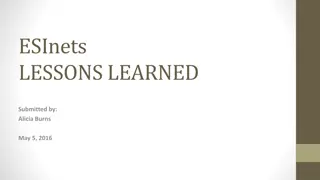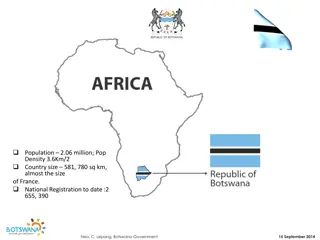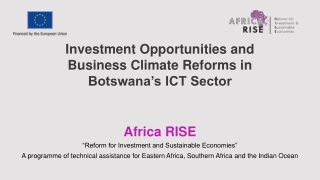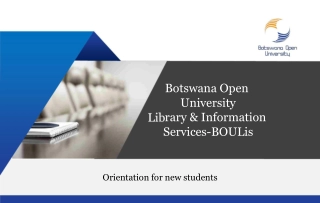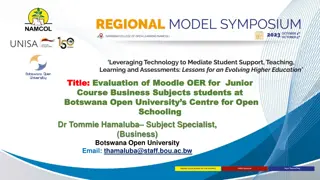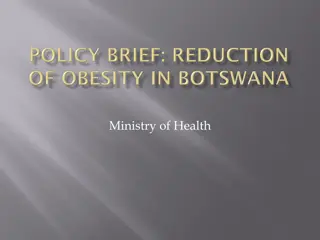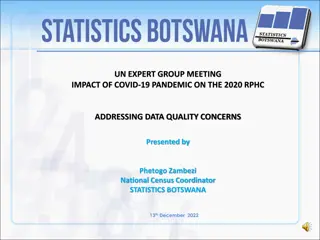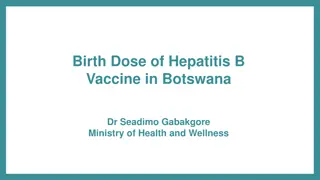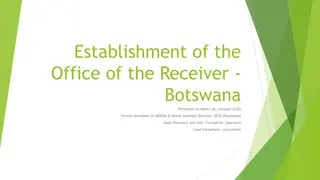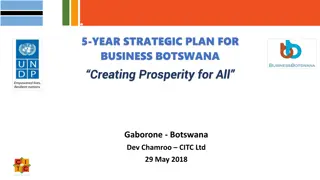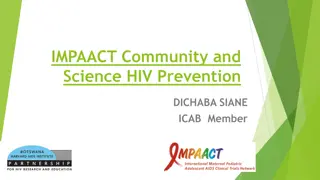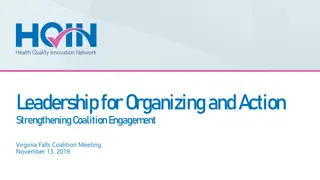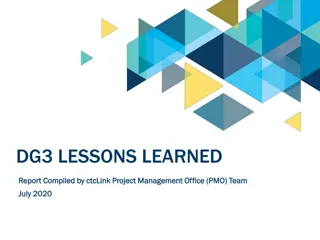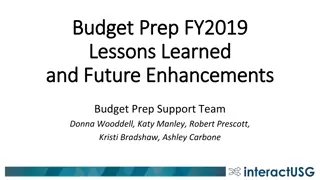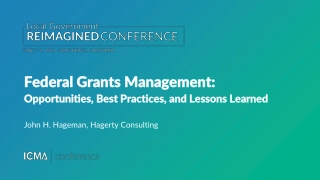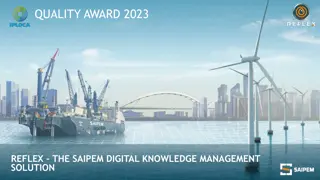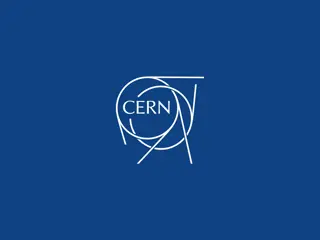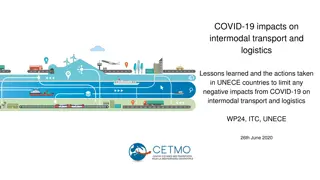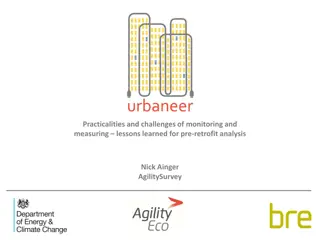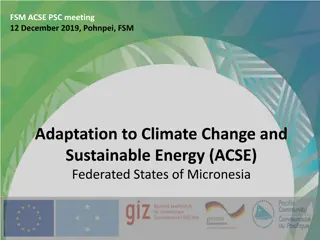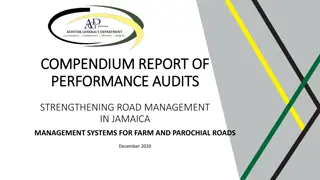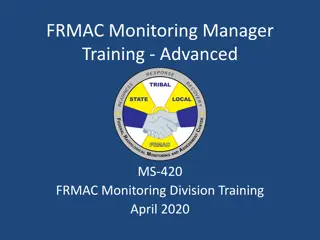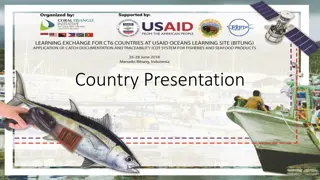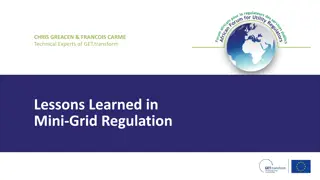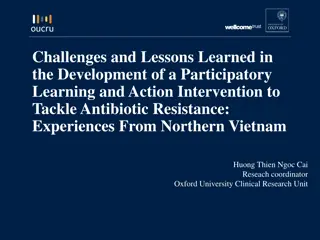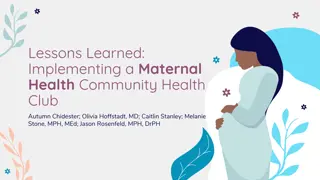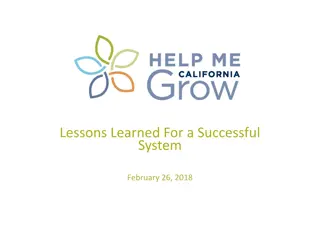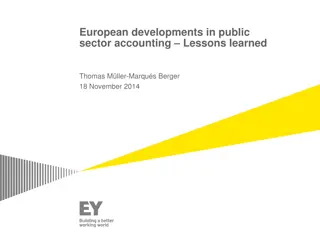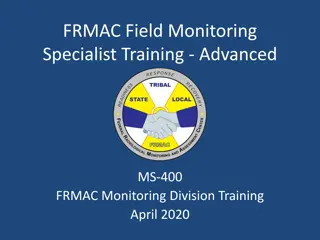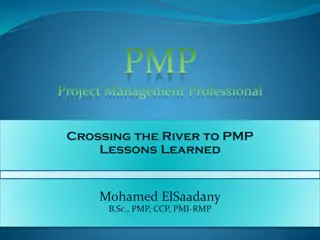Lessons Learned from IDDS Botswana Organizing Team
Organizing team roles were well-defined at IDDS Botswana, but some organizers neglected their responsibilities, leading to confusion and challenges. Recommendations include better role clarification for local and international organizers, structured time for rest, and improved pre-summit training methods.
Download Presentation

Please find below an Image/Link to download the presentation.
The content on the website is provided AS IS for your information and personal use only. It may not be sold, licensed, or shared on other websites without obtaining consent from the author. Download presentation by click this link. If you encounter any issues during the download, it is possible that the publisher has removed the file from their server.
E N D
Presentation Transcript
Lessons Learned IDDS Botswana
Organizing Team Overall, the roles within the organizing team were well defined and organizers had clarity to their roles and responsibilities within the summit. Some organizers neglected their roles without actually realizing it was their roles. In other instances some organizers took up roles that were not theirs in order that the summit was kept moving smoothly (1 comment) Having two roles as organizer and design facilitator (DF) was overwhelming at times, especially during the busiest days and organizers felt sleep deprived. This affected organizers productivity. There was some confusion over the purchasing of tools, organizing the workshop, and training students on workshop safety protocols as direction got lost between Aaron, Blak, Jamie, and Mathambo. The specific roles of community liaisons (Jacob, Nicodemus, Khomtsa) were not very clear. There was a lot of support and collaboration among the Design Facilitators and Amy/Mustafa were available whenever help was needed.
Organizing Team: Recs Better defined roles for local and international organizers More clarity on community liaison and partonizers (Part- organizers) and their roles within the summit. Some roles/tasks can be performed on less busy days to avoid over-working of organizers. More structured time for DF s to recharge and recuperate so that they feel productive and energized for their teams and summit. More support through structured time/meetings with lead instructors (Amy & Blak) to work through team specific challenges on issues of team dynamics/cultural issues (especially for International DF s) More structure for collaboration ahead of time (about project management) for projects that have logistics to figure out around specialized materials or purchases.
Pre-Summit Prep Pre-orientation events such as the team skype calls and online video trainings need to be more focused towards actual training of the DFs. Design facilitator video trainings lacked real-world scenarios and were more focused on theory. Content from these videos could be extracted/consolidated and presented in a way that is more accessible to the DFs. Skype sessions were helpful in understanding roles better and building a rapport among the organizing team. However, they detracted from actual important training of the DFs. Recording the team hangouts decreased the comfort of organizers in asking questions or making comments and pushed people to not participate actively in the calls.
Pre-Summit Prep: Recs Better organization of online training materials/sessions More assigned readings/presentations ahead of team hangouts and then using the hangouts to reflect and ask questions. All questions comments brought up in the summit could be recorded and presented separately in a concise document/presentation for current and future DFs. This could be an alternative to live recordings of the hangouts. Training documentation or resources can be consolidated into one document with images/words in order to be more accessible to all DFs.
Curriculum There is a need for the design notebook to be adapted to the specific curriculum of the summit. Good resource but design notebooks were rarely used by participants since it did not match the sequence of events/activities of the summit. There is a need to refine the curriculum to make topics flow according to expected outputs of the participants at the end of the summit. The view by participants was that some valuable information that could have been given before an activity was only provided after and activity was conducted so it was not possible for the activity to be done according to the requirements as outlined by the information provided in the sessions
Curriculum Too little time for teaching workshop skills For skills like metal fabrication, more time should be allocated to teaching in smaller groups as this might be more useful than the build-its. Having structured time for these sessions would enable access to D kar residents. The structure of classroom sessions and group work sessions added perspective to the design process theories. Design for X sessions were more engaging and accessible to a larger audience with different learning objectives and styles. The success of classroom curriculum varied based on the different levels of education, language, and learning styles. Market Activity could have been better timed.
Curriculum: Recs Design workbook should be more customized to the summit Having more activities/sessions that require the active use of the workbook. More sessions/activities that are interactive and accessible to different audiences. The structure for Design for [X] sessions should be continued for the next summit(s). The Market Activity was well received but timing of the session could be improved. I.e.- should not be immediately after the community review session. Having more afternoon breaks for the participants to personally absorb and reflect on the information they received or to recharge.
Participants and Teams Participation selection for the summit was well executed and a good mix of technical and educational background. There was one team that had majority of participants of similar age and background and played an important role in team dynamics and the issues that rose. Participants were selected into teams based on interests and this was a critical process to ensure that they remain motivated. However, there were a few participants who were placed in projects they had not indicated their interests for but it worked out alright. There was a gender imbalance as there were fewer female participants as compared to male. Translation was tricky for certain teams, where one participant was pressed into service as a translator and was unable to do his job perfectly which lead to frustrations and tensions within the team. Wheelchair team was very large for the DF to handle to his best ability. The hard dynamics that stood out were language/translation, gender, and communication styles.
Participants and Teams M&E provided very helpful feedback, but it was very difficult to reach all local participants Helpful to have continuous feedback from surveys and conversations throughout the summit Survey translation for local participants was difficult to administer as it was done in groups. This biased the answers as participants influenced each other with their ideas through the conversation. The Tswana translator was almost always a DF which potentially influenced the way certain focused questions were answered, especially for the Mid-Summit Surveys.
Participants: recs Better distribution of team members across projects in terms of gender, age, size of team. Examples: Ensuring that members of similar ages (especially young students) are more evenly distributed. Call out for applications, especially to women in order to allow for a gender balance among groups. Ensure that no one group exceeds 8-10 members, including local participants. Better support in collecting data from local participants (M&E needs some help with this) Possible 1-1 interviews with participants. Providing focused feedback for DF s regarding their teams and roles External translators? (i.e.. Not participants, or partonizers ) More graphical/oral representation of some aspects of surveysfocus to get more feedback from local participants
Logistics Unexpectedly great amenities Breakfast and lunch were exceptionally good, dinner needed some improvements. There was enough variety of vegetarian food! The Workshop and ICT room played a critical part in the functioning of the summit. Internet was okay but useful to have despite the Need a better system for cleaning bathrooms as well as fixing leakages etc. This potentially can affect the health of the participants. Small space made personal interactions with everyone easier Great IDDS culture culture of participants seeing organizers do everything and then pitching in themselves without being asked. For example, Tempei helping with small fixes around the dorms etc. Participation presentations were a hit and fostered closer relations and networks for future collaboration between participants and organizers. Could improve working spaces and need better system to procure supplies Break out rooms were useful but rarely used, given the pleasant weather. However, documentation became harder outside which potentially meant that information is lost. Workshop setup needed a lot more time and there was a lot of confusion around buying tools as there was misinformation about where the tools could be purchased. Translationamong the whole group and specific project teams was difficult as some organizers were pulled into translating which added to their tasks.
Logistics: Recs Ensuring that the workshop and ICT rooms are more secure so that participants can safely access the rooms 24 hours every day. Ensuring that participants are not accessing sites like youtube or other streaming channels during peak work hours. Installing clothes hooks, bathroom stools which makes it easier to use the shared showers. This is especially useful for those staying in tents.
Communities Having the Kgotla in the beginning of the summit was very useful in establishing a formal presence in D kar. Community interaction was more systematic given that DFs went out to the community before the summit started. This was helpful in establishing a presence, although it was not very intensive. There was a general consensus that having the summit in the same place as last year was critical as it created strong advocates for IDDS among the community. The local participants were an incredible addition to the summit and played a vital role in reaching out to the community. For the wheelchair project, there was limited interaction with the different stakeholders like wheelchair riders and other people with disabilities, given that previous partnerships were not established in D kar. Organizers need to be more deeply briefed on the history and politics of D Kar.
Projects The projects selected and the framing of the projects was excellent because it provided for a wide spectrum of areas that were identified as challenge areas and have the potential for addressing through the design cycle. For the washing machine, the project framing worked really well in being broad enough that it allowed for flexibility and narrow enough in that the team did not have to spend much time framing the project and could focus instead on other steps of the process. Wheelchair project needs more active technical guidance from experts such as Matt in order to successfully continue prototyping and testing.
Projects: Recs Tea Maker Project: Problem framing can be more narrow for another future IDDS project to focus on boiling smaller amounts of water for efficient tea-makers. Glass Beads Project: Moving forward, the participants should start concentrating on making the beads as the final product. Morama Nut Project: Introduce more discussions, maybe a special session to talk about opportunities and challenges with introducing new ideas/creating markets for Morama Nut Products such as the coffee. Interlocking Blocks Project: The next step should be to test the blocks through scale modelling and building example buildings and work out details like door and window frames, roof interaction, and wall surface. Wheelchair Project: Establish strong partnerships to ensure appropriate involvement of many different stakeholders such as the end users and people with disabilities. This will ensure that checks are in place to make sure that the wheelchair hardware is good/safe and that the process appropriately includes all wheelchair rides and service providers. See more of project reports for more comprehensive feedback on project/prototype assessments.
Continuity Potential for continuity is huge given that there is now a Innovation center in D kar that provides the space and tools for local champions of the prototype to continue working on their development. Most non-local participants pledged to continue offering support for project continuity but concrete plan for future communication with local participants remain unclear for many project teams. Given that there is now access to internet, local communities can take advantage of micro-grants and receive support for writing grant applications, prototype research etc. Politics in D kar make it unclear which organizations/community partners such as the different university groups should be responsible for what role For the wheelchair project, partnerships with service providers, riders, and wheelchair builders will be critical going forward before pushing the technology development. However, plans are underway to iterate further on the work locally and in MIT (through the D-lab class field visit to D kar in January, 2017).


